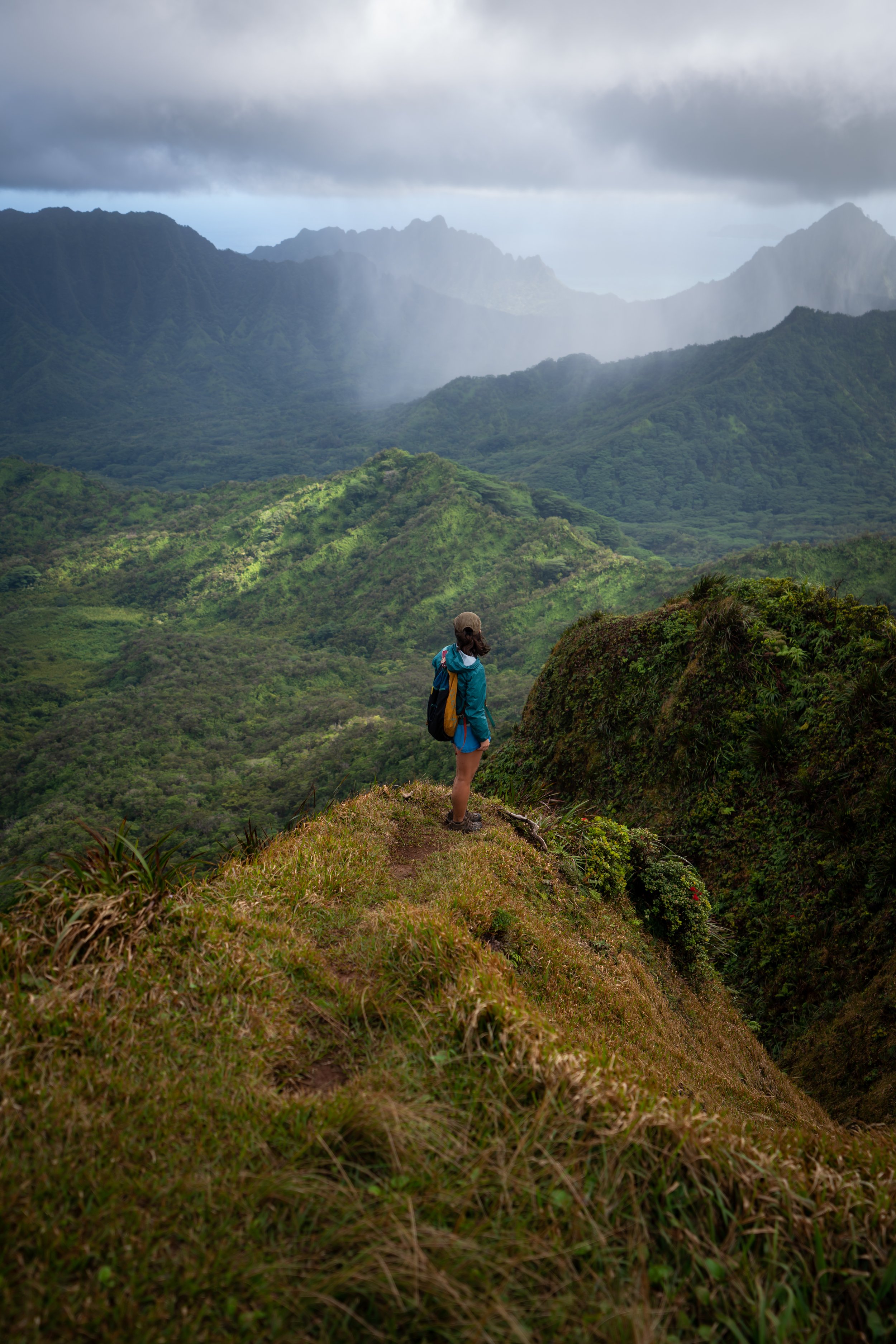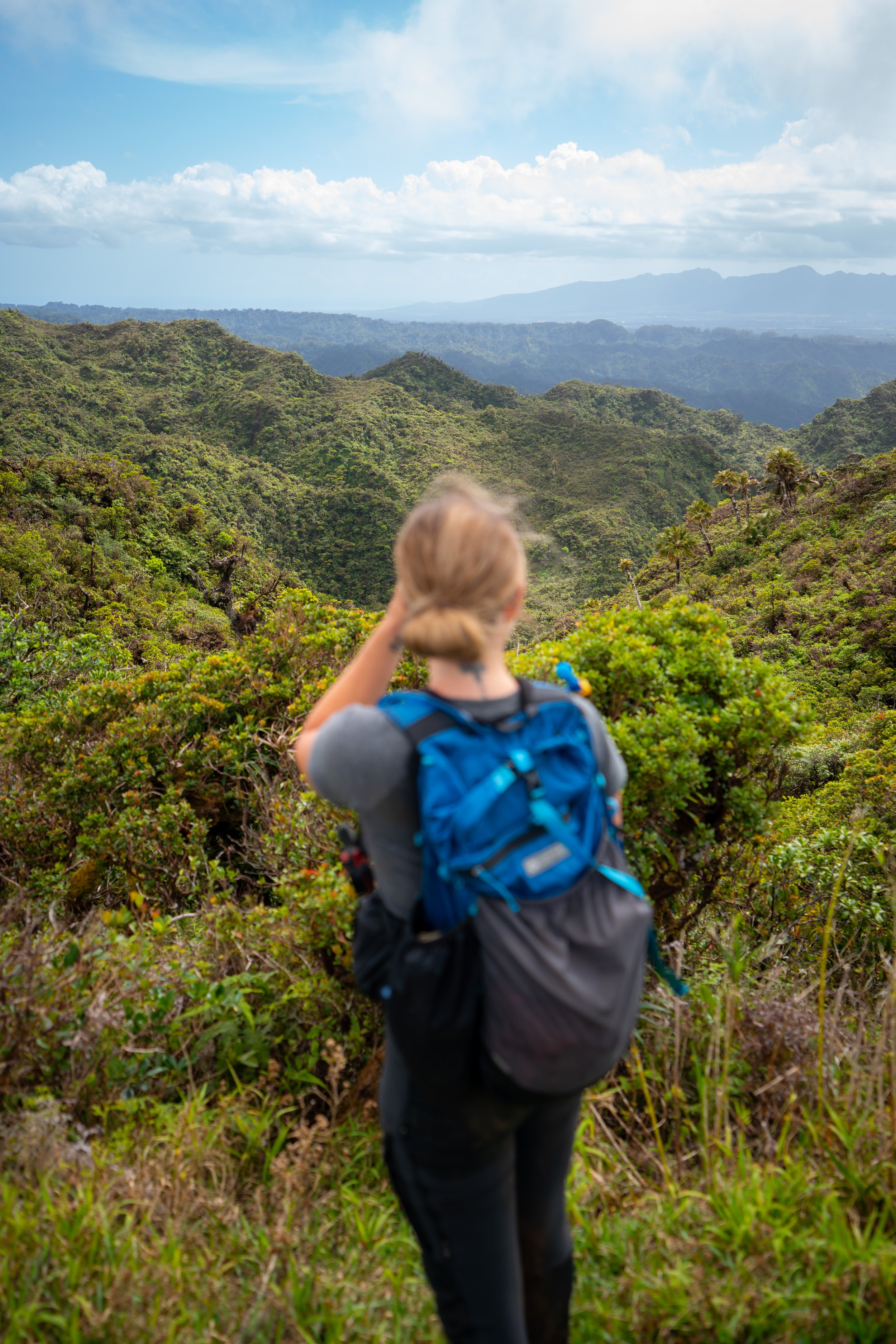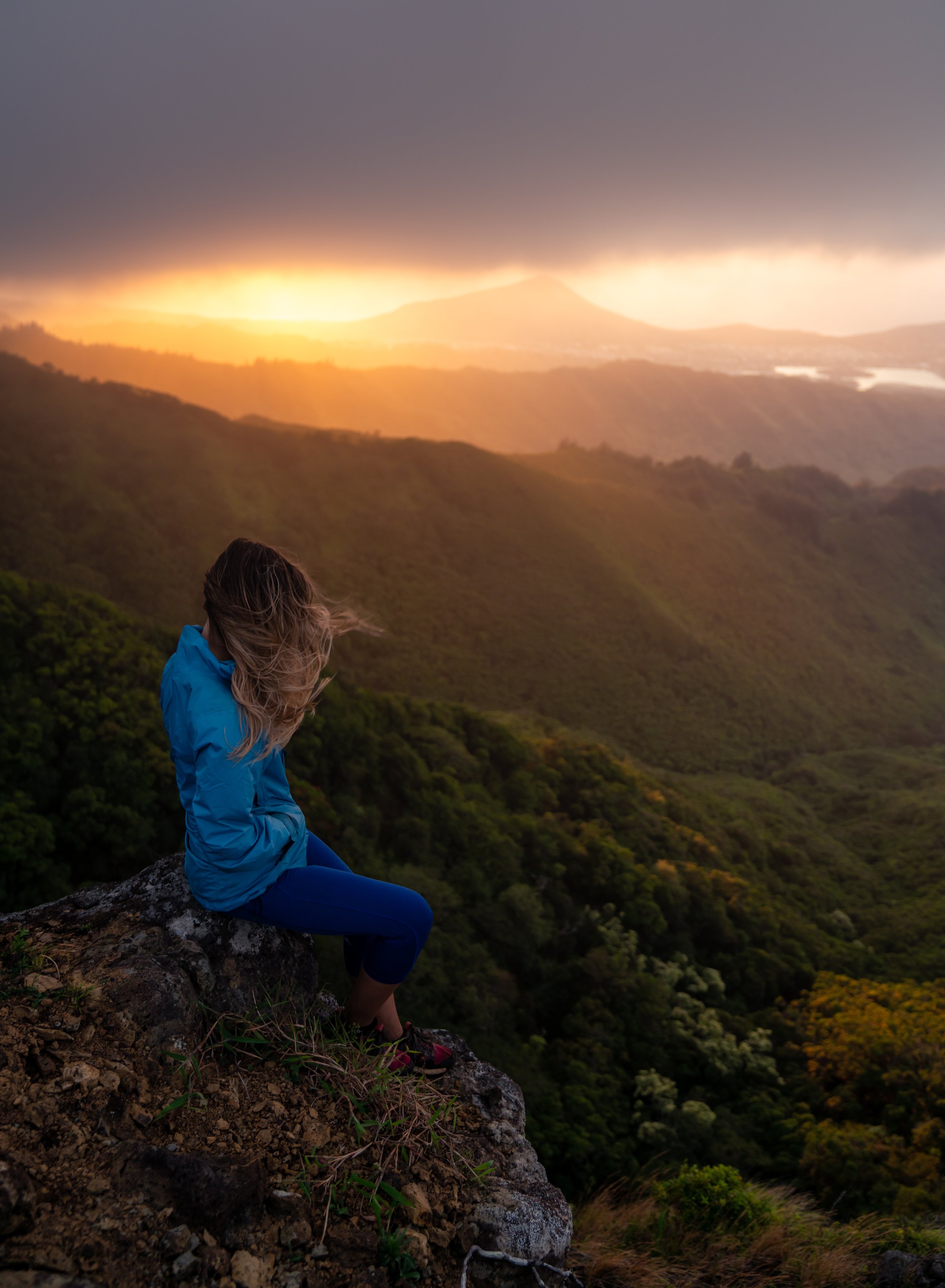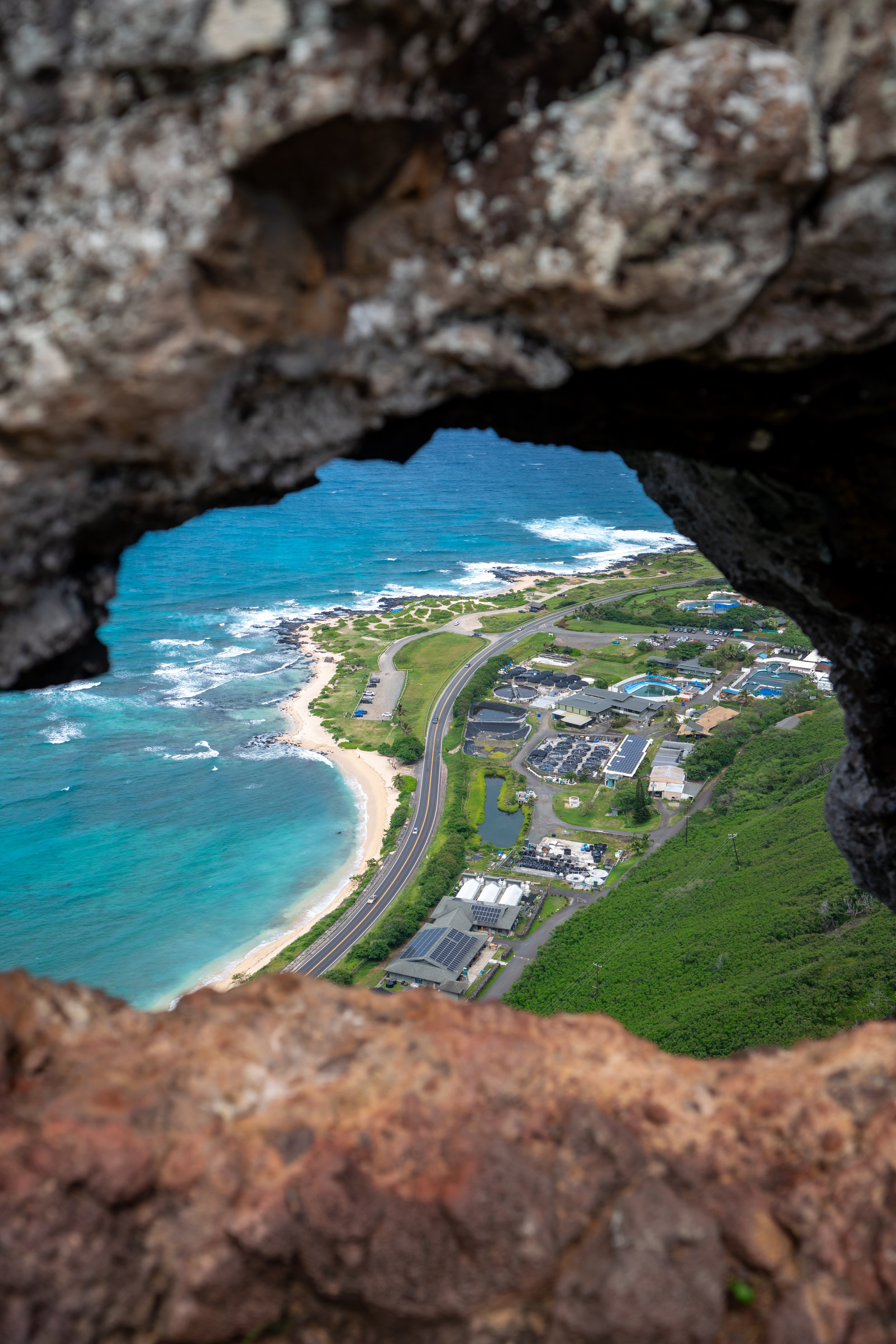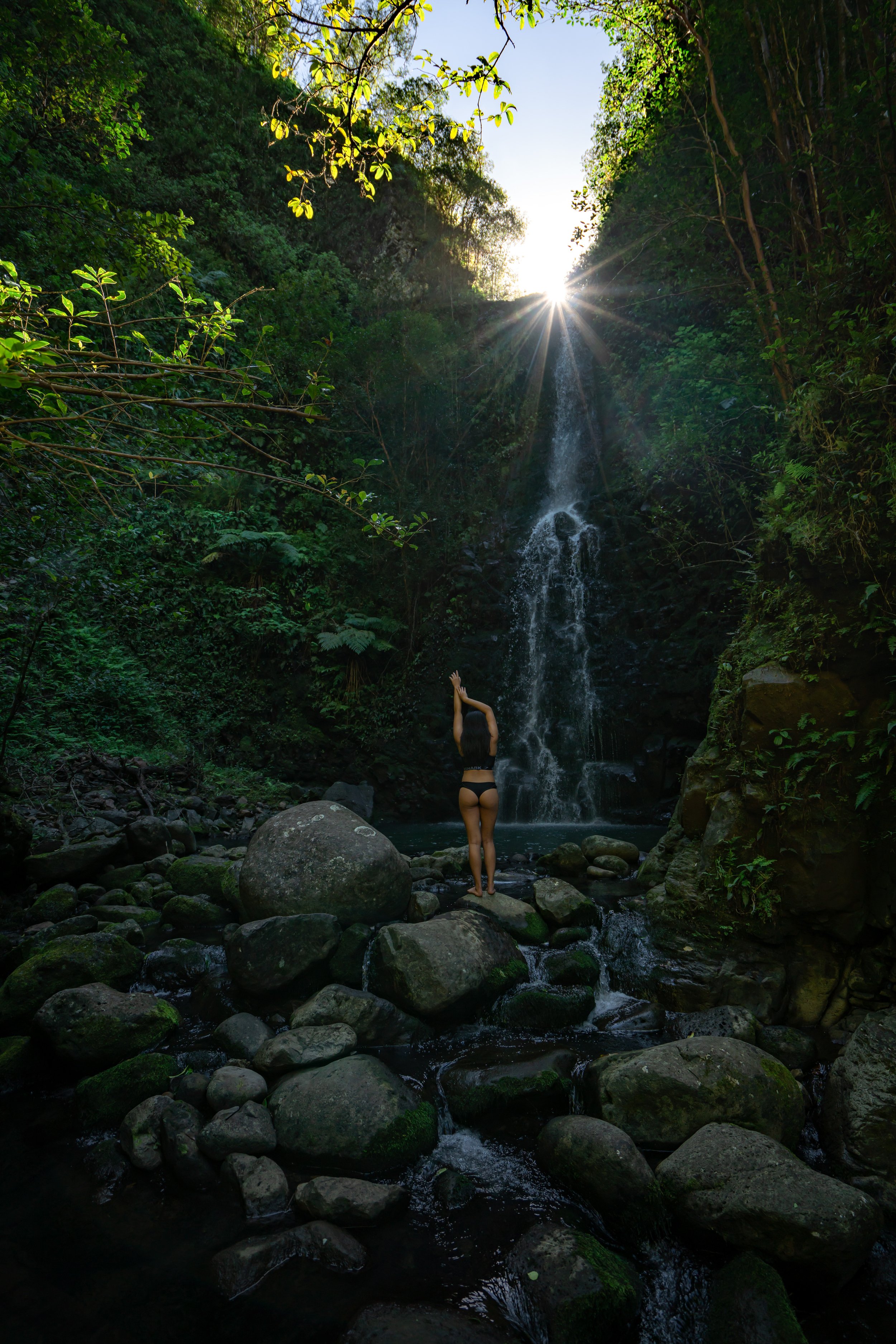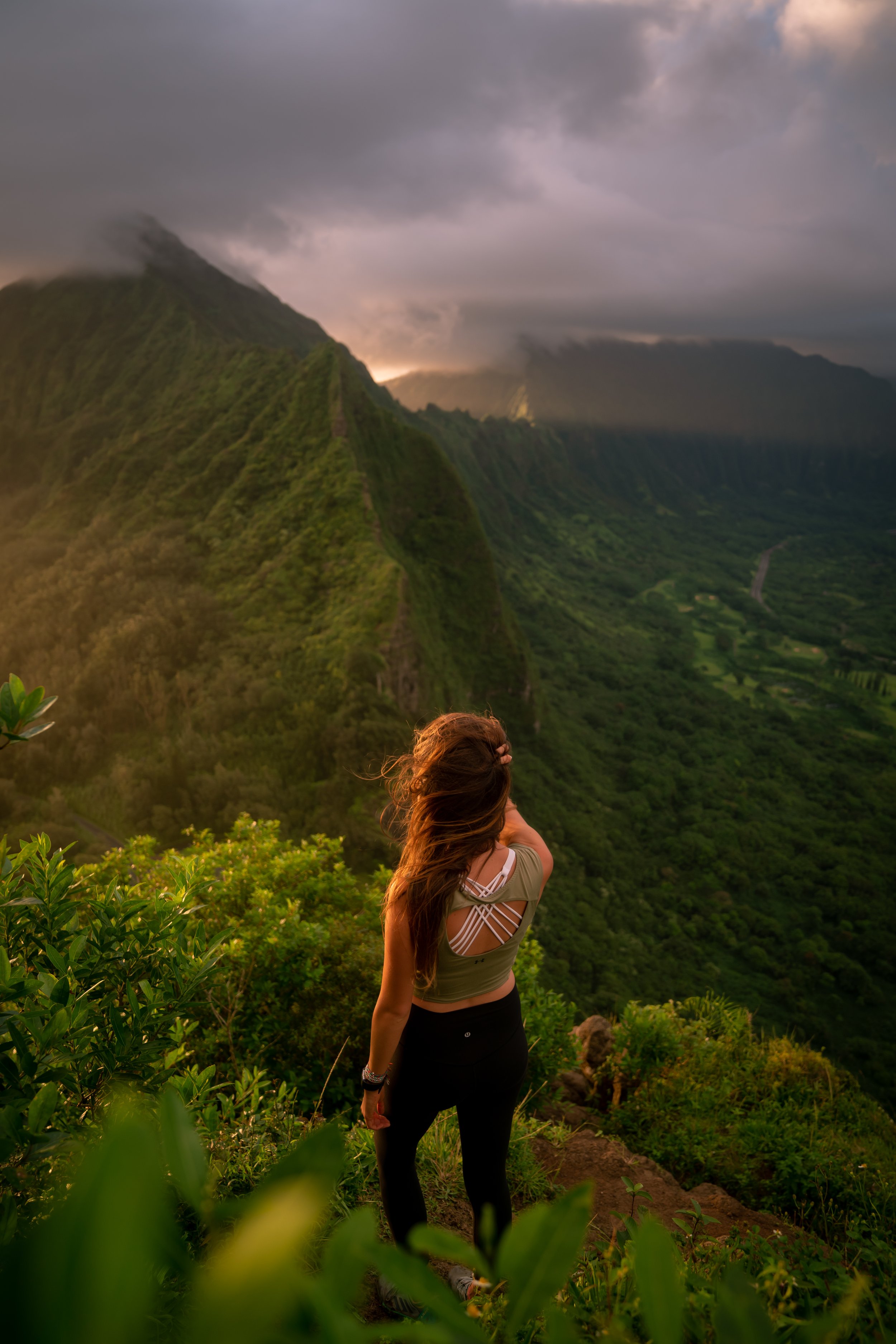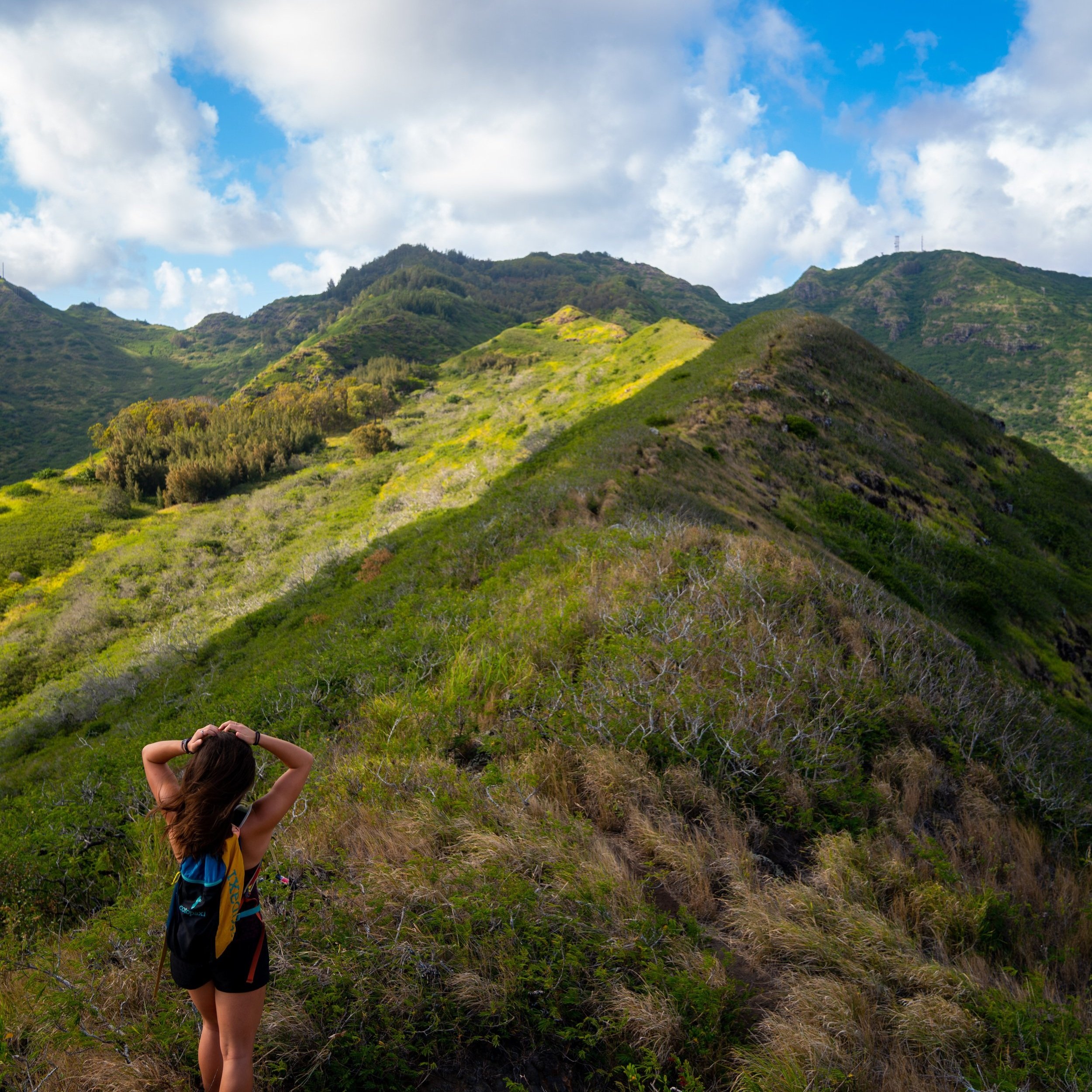Hiking the Keaʻau Middle Ridge Trail on Oʻahu, Hawaiʻi
Distance: 5.4 miles / 8.7 km
The Keaʻau Middle Ridge Trail on the West Side of Oʻahu is a short, steep, and, most of all, beautiful day hike in the back of Keaʻau Valley, and for a number of reasons, it’s one of my favorite adventures on the leeward side of the island!
The first reason I say this is that I personally love exposed Hawaiʻi ridges with some fun, but not too difficult, scrambling and climbing—such as Kolekole Trail to Puʻu Hapapa or Puʻu Kaʻilio. But the second, and perhaps more important, reason I think so highly of the Keaʻau Middle Ridge Trail is that the view from the summit looks out toward one of the few undeveloped valleys on Oʻahu—something that’s quite rare from most summits across the island!
All this to say, Keaʻau Middle Ridge is a fun but steep Class 3 adventure, but to those who are up for the challenge, the view from the summit makes the effort all worth it!
Keaʻau Middle Ridge Trailhead Parking
Parking for the Keaʻau Middle Ridge Trailhead is located at the very end of Keaʻau Homesteads Road, where the road meets the public access road for the hunting units within Keaʻau Valley.
While I personally view Keaʻau Valley as a safer place to park than other west Oʻahu trails, don’t get complacent.
By this, I mean, consider the Keaʻau Valley Trailhead to be a high-crime area for petty theft, meaning you should never leave bags or anything valuable in your car.
Google Maps Directions: Keaʻau Middle Ridge Trailhead
Hiking the Keaʻau Middle Ridge Trail
Note that, while there may be a number of posted no trespassing signs, the public has a right to access Keaʻau Valley via Keaʻau Homesteads Road.
From the parking area, simply follow the access road up Keaʻau Valley, which will continue for the first 1.4 miles (2.3 km) until the actual trail begins.
Waikomo Stream
Almost immediately after the Waikomo Stream crossing, turn right to continue up into Keaʻau Valley.
This is also where the access road comes to the first public hunting unit.
When the road appears to split, stay to the right to continue toward the middle ridge.
This initial section before the actual trail climbs somewhere between 700-800 ft. (213-244 m).
After a long walk through the bottom of Keaʻau Valley, the true Keaʻau Middle Ridge Trail finally begins at about 1.4 miles (2.3 km) into the hike when the trail crosses a typically dry intermittent stream.
Keaʻau Middle Ridge
Then, without much warning, Keaʻau Middle will make a hard left turn to start climbing the ridge.
Since much of the beginning is so gradual, most of the elevation gain on Keaʻau Middle is condensed into this short but very steep climb that begins not long after the stream crossing.
Additionally, there’s not a lot of shade on Keaʻau Middle, which is why I strongly advise hiking in a hooded sun shirt, like the ones linked below.
Warning
When Keaʻau Middle comes to this S-like pattern in the ridge, you have reached the beginning of some of the highest-exposure sections on the entire trail.
While these are absolutely sections where you cannot fall, Keaʻau Middle is a bit easier to navigate compared to other narrow ridgelines on Oʻahu, including some that I mention later in this post.
Past the S in the ridge, Keaʻau Middle will begin approaching this steep rock band, where the trail will contour around to the right in order to continue higher.
Keaʻau Contour
This contour is only 0.1 miles (0.2 km) and will abruptly end where the ridge begins ascending the start of the first real climbing/ scrambling section on the entire trail.
On the far side of the contour, make a mental note once on the ridge again, as this can be a very easy turn to miss on the hike back down.
Then, not long after starting up the ridge again, Keaʻau Middle comes to the first real climbing/ scrambling section of the hike.
These photos may make this section look worse than it is, but it isn’t the worst idea to bring your own rope incase the ones on this section are worn.
At the next opening, you finally start to get views of the true Keaʻau Middle Summit.
In my opinion, it’s not until this clearing in the ridge that the summit starts to feel close!
Finally, this last little contour may be the trickiest section to navigate on the entire trail, and for very tall people, it may be easier to climb directly up the ridge instead of the side, as this is another of many parts on Keaʻau Middle where you cannot fall.
Keaʻau Middle
From the summit of Keaʻau Middle, there’s spectacular views of both Mākaha Valley and Mt. Kaʻala off in the distance.
If you’re looking for a bit of a more challenging hike, check out the Kawiwi Ridge to Puʻu Kēpauʻula, more commonly referred to as Kamaileʻunu on the right side of the photo below.
The notch that you can see just below Kamaileʻunu is a bit of a tricky section, but everything after Puʻu Kawiwi to Puʻu Kēpauʻula is some pretty hard Oʻahu hiking, with the notch being the crux of the route.
Hiking Further (Keaʻau-ʻŌhikilolo Loop)
Keaʻau Middle can be extended, but do not continue past the summit if you weren’t prepared for it.
If you were to hike to the right from the summit, Keaʻau Middle traverses toward true Keaʻau, which would finish down by Mākaha Beach.
However, if you were to go left from Keaʻau Middle toward ʻŌhikilolo Ridge, the hiking gets significantly more difficult.
By this, I mean that there is one section between Keaʻau Middle and ʻŌhikilolo that’s more challenging than anything on the Keaʻau Middle Ridge Trail thus far. This is why proper planning, such as bringing additional ropes, is essential, as so few Oʻahu hikers traverse these random ridgelines.
Hiking Down
As mentioned previously, don’t forget about the hard right turn off the summit ridge and onto the Keaʻau Contour.
If you miss it, the ridge continuing straight will quickly become more overgrown, which should be a good indicator to turn back.
Native Plants on the Keaʻau Middle Ridge
Unfortunately, there aren’t a ton of native species to look out for on Keaʻau Middle, as fires and invasive species have had their lasting impacts on Keaʻau Valley.
That being said, there are a few to look out for, most notably ʻAʻaliʻi along the trail in the beginning. Additionally, once on the ridge, you can also see other natives such as Lama trees and a random ʻAlaheʻe or two. If you’re lucky, you may even spot a Wiliwili, but it’s unfortunate that one of the largest Wiliwili stands on Oʻahu has succumbed to fire, which is now just remnants of the past.
All said, if you would like to learn more about these and tons of other native plants from across the islands, I encourage you to scroll through my separate post.
Read My Separate Post: Native Hawaiian Plant Guide



